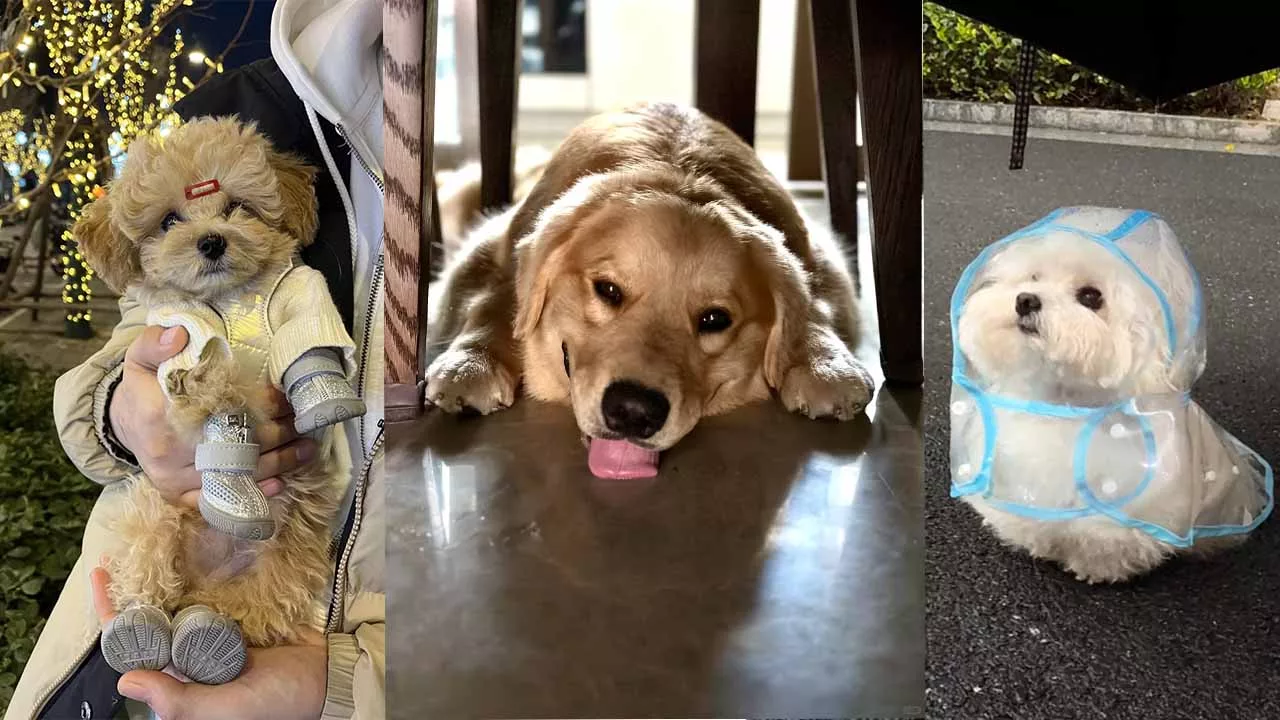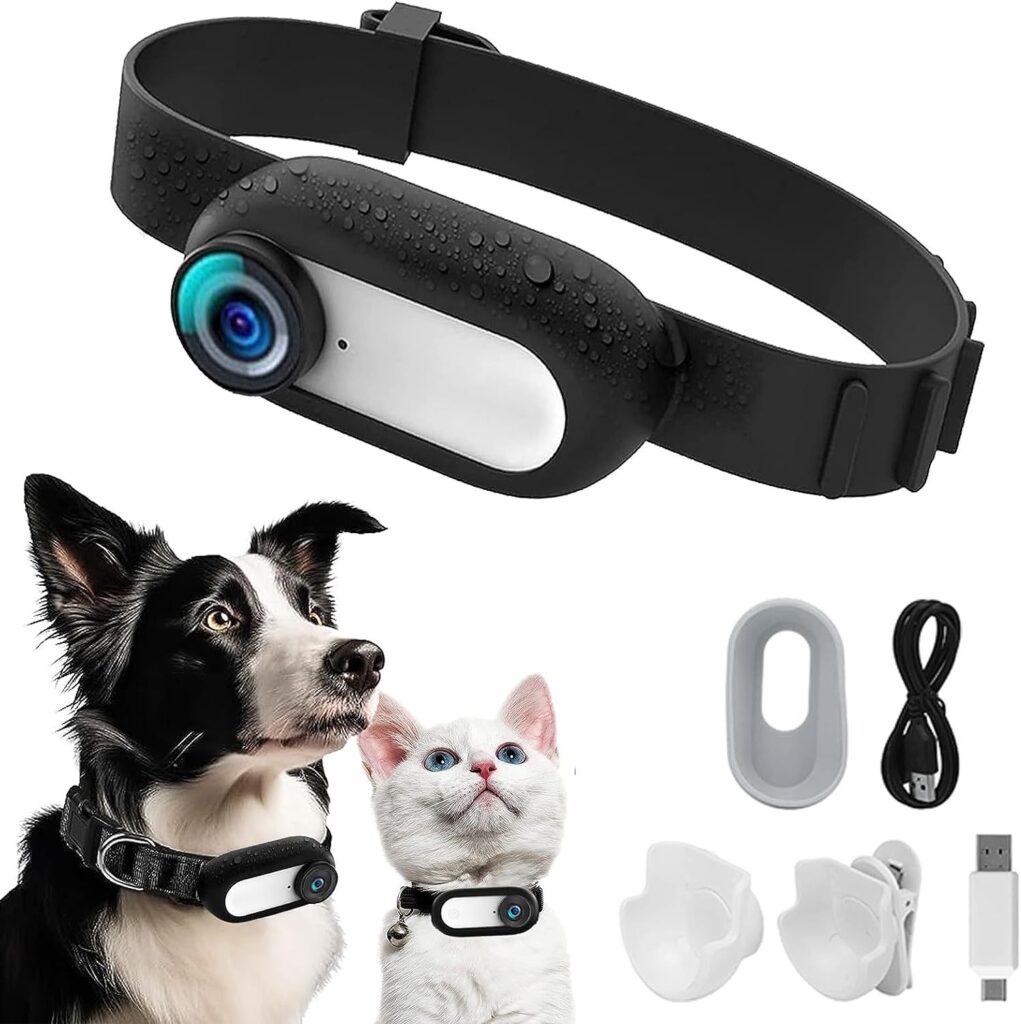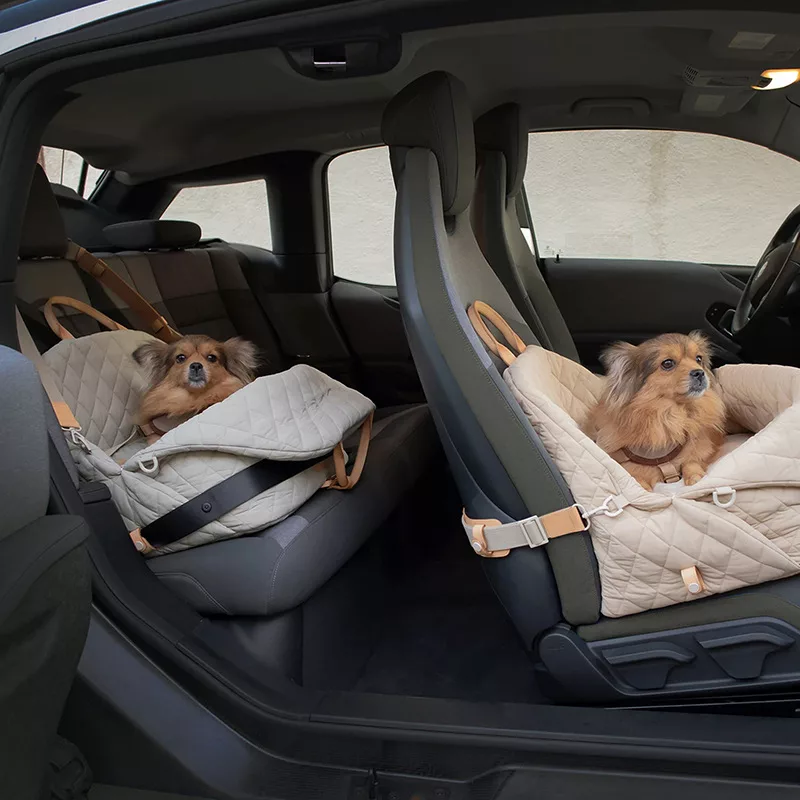
Posts page
Do Dogs Really Need to Wear Clothes?

Have you ever seen other people’s dogs wearing clothes while walking them? Have you ever wondered: Do dogs really need to wear jackets, sweaters, or pajamas?
Whether or not to dress your dog depends on their size, coat type, and the climate they are in. Some dogs are particularly sensitive to the cold, while others struggle more with heat. In the following, we will introduce the cold and heat tolerance of various dog breeds, helping you better understand their needs and make more informed decisions about their care. This way, you can ensure your dog’s comfort and health in different weather conditions.
Understanding Dog Breeds’ Sensitivity to Cold and Heat: A Guide to Their Temperature Tolerance and Physical Traits
| Breed | Cold Sensitive | Heat Sensitive | Reason | Physical Structure |
|---|---|---|---|---|
| Chihuahua | ✅ | ✅ | Small size, sparse coat, little subcutaneous fat, poor resistance to both cold and heat. | Small size, thin coat, thin fat layer, easily loses heat and sensitive to cold. |
| French Bulldog | ✅ | ✅ | Short coat and flat face make it difficult to regulate body temperature, prone to overheating. | Short coat, flat face (short nose), inefficient at heat dissipation, small size. |
| Pug | ✅ | ✅ | Small size, short coat, flat face, poor at heat dissipation or resisting cold. | Small size, short coat, flat face, unable to effectively regulate temperature. |
| Miniature Schnauzer | ✅ | ❌ | Small size, medium-length coat, not adapted to cold environments, coat not thick enough. | Medium-length coat, short legs, small size, thin fat layer. |
| Yorkshire Terrier | ✅ | ❌ | Long, thin coat, small size, sensitive to cold, poor heat tolerance. | Long hair, small size, little subcutaneous fat, unable to retain heat well. |
| Pomeranian | ✅ | ✅ | Though it has a thick coat, small size makes it sensitive to temperature changes, not adapted to extreme cold or heat. | Thick fur, but small size, thin fat layer, sensitive to temperature fluctuations. |
| Dachshund | ✅ | ❌ | Short coat, small size, not suited for extremely cold weather, also somewhat heat sensitive. | Short coat, small size, long body, short legs, thin fat layer, weak tolerance to cold and heat. |
| Golden Retriever | ❌ | ✅ | Larger size, medium coat, not well adapted to cold but heat intolerant. | Medium to long hair, large size, coat provides some warmth, but prone to overheating in summer. |
| Samoyed | ❌ | ✅ | Thick coat suitable for cold climates, but easily uncomfortable in high heat. | Double thick fur, large size, fur suited for cold weather but leads to overheating in hot environments. |
| Shiba Inu | ❌ | ✅ | Thick coat, but poor heat tolerance in extreme heat, prone to overheating. | Medium-length coat, medium size, thick coat, suited for cold climates, but intolerant to heat. |
| Alaskan Malamute | ❌ | ✅ | Double coat suited for extreme cold, but uncomfortable in high heat. | Double thick fur, large size, suited for extreme cold but may overheat in high temperatures. |
Explanation:
Cold Sensitive Dogs:
Reason: These dogs are typically small in size, have sparse or thin coats, and lack a thick layer of subcutaneous fat, making them unable to withstand cold temperatures. They are more prone to heat loss and are easily susceptible to colds or illness in cold environments.
Physical Structure: These dogs often have thin coats, small sizes, and thin fat layers. Short-haired or small-sized breeds especially struggle to retain body heat due to their body structure and skin, making them particularly vulnerable to the cold.
Heat Sensitive Dogs:
Reason: Some dogs (like brachycephalic breeds) have shorter noses and flat faces, which make it harder for them to regulate their body temperature in hot environments. Additionally, some breeds, although they have thick coats, may overheat in warm weather as their fur traps too much heat.
Physical Structure: Breeds with short noses, short coats, or long hair are less effective at heat dissipation or temperature regulation, making them prone to overheating, particularly on hot days.
How to Tell if Your Dog is Too Hot or Too Cold and What to Do About It
Signs of Cold in Dogs:
Shivering or Trembling: The most common sign of cold in dogs is constant shivering. This is especially true for small or short-haired dogs, as they may not be able to retain enough body heat.
Curling Up or Seeking Warm Places: Dogs may try to curl up or hide in warm places to reduce heat loss.
Reluctance to Go Outside: If a dog feels cold, it may show reluctance to go outside, especially in small, short-haired breeds.
Decreased Energy: Dogs may become sluggish and reduce their activity levels in cold weather.
Rapid or Shallow Breathing: In cold weather, a dog’s breathing may become more rapid or shallow.
Cold Ears and Tail: A dog’s ears and tail may feel colder in a cold environment, especially in short-haired breeds, as their skin and fur are thinner.
How to Care for Cold Dogs:
Dress Them for Warmth: Provide suitable clothing for small or short-haired dogs, especially when going outside in cold weather.
Provide a Warm Sleeping Environment: Ensure that the dog has a warm and comfortable bed, and avoid letting the dog sleep on cold, hard surfaces.
Limit Outdoor Activity Time: Reduce the time spent outdoors in cold weather, especially in extreme cold, to avoid prolonged exposure.
Adjust Indoor Temperature: Keep the indoor temperature comfortable and avoid letting the environment become too cold, particularly in winter, to keep the home warm.
Increase Food Intake: In cold seasons, you can slightly increase the dog’s food intake to help them maintain body heat, especially in breeds that require more energy.
Signs of Heat in Dogs:
Excessive Panting: Dogs will pant to help regulate their body temperature in hot environments. If they begin to pant rapidly or with their mouths open, it may indicate they are overheating.
Tongue Out and Reddened: A dog’s tongue may stick out and become redder, which is a way for them to regulate body heat.
Lethargy and Weakness: In hot weather, dogs may become tired, reluctant to move, or walk.
Excessive Drooling: Dogs may drool more in hot temperatures as they use saliva evaporation to cool down.
Hot Skin: If you touch a dog’s skin (especially on their belly or ears), it may feel hotter than usual.
Slow Movements or Unsteady Stance: If the dog shows signs of heatstroke, their movements may become slow, and they may even appear unsteady on their feet.
How to Care for Overheated Dogs:
Keep Them in a Cool Environment: In hot weather, ensure the dog has a shady, well-ventilated place to stay. Consider using air conditioning or fans to keep the indoor environment cool.
Provide Plenty of Water: Ensure that the dog always has access to fresh water to prevent dehydration.
Avoid Going Out at Noon: Avoid walking the dog during the hottest part of the day (usually from noon to afternoon). Walk them in the early morning or evening when it’s cooler.
Allow for Rest: Avoid letting the dog run for long periods or exercise too intensely. Let them rest and keep them ventilated.
Use Cold Compresses: If a dog shows signs of overheating, use a damp towel to wipe their body, especially their head, neck, and belly, to help cool them down.
Give the Dog a Bath: On hot days, giving the dog a lukewarm bath can help cool them down.
How to Protect Your Dog from the Dangers of Extreme Cold and Heat
Danger of Cold Weather:
Hypothermia:
Symptoms: Shivering, slowed activity, rapid breathing, muscle stiffness, unconsciousness, and heart failure.
Cause: Prolonged exposure to cold temperatures.
Danger: Can lead to organ failure and be fatal if untreated.
Frostbite:
Symptoms: Redness, swelling, ulceration, and blackening of exposed areas.
Cause: Restricted blood flow due to extreme cold.
Danger: Can result in tissue damage, amputation, and long-term health issues.
Reduced Immunity:
Symptoms: Increased susceptibility to infections and viruses.
Danger: Can result in respiratory illness or other infections.
Respiratory Problems:
Symptoms: Coughing, rapid breathing, and nasal congestion.
Danger: Can lead to chronic diseases or worsen existing conditions.
Danger of Heat:
Heatstroke:
Symptoms: Rapid breathing, vomiting, weakness, unconsciousness, seizures, or death.
Cause: Inability to cool down in high heat.
Danger: Can lead to organ failure and be fatal without treatment.
Dehydration:
Symptoms: Dry mouth, sunken eyes, lethargy, and loss of appetite.
Cause: Loss of water through panting and drooling.
Danger: Can cause kidney and heart failure.
Heat Exhaustion:
Symptoms: Rapid breathing, fatigue, and unsteady movements.
Cause: Overexertion in hot temperatures.
Danger: Can develop into heatstroke.
Skin Issues:
Symptoms: Redness, inflammation, and infections.
Cause: Humid conditions and insufficient evaporation of sweat.
Danger: Can lead to long-term discomfort or infection.
How to Prevent and Respond:
Preventing Cold Exposure:
Keep the Dog Warm: Dress dogs in warm clothes, provide a warm bed, and protect them from cold winds.
Limit Outdoor Time: Avoid leaving dogs outside in freezing temperatures.
Regularly Check the Dog’s Condition: Monitor ears, tails, and paws for frostbite.
Preventing Heat Exposure:
Ensure Adequate Water: Always provide fresh water to avoid dehydration.
Avoid Midday Heat: Walk dogs in the early morning or evening.
Provide Shade: Ensure dogs have access to cool, shaded areas.
Regular Grooming: Trim long-haired breeds’ coats to help them stay cool.
No matter how the weather changes, taking good care of your dog is the most important thing! Understand their needs, dress them in suitable clothes, and provide a comfortable environment. This way, they can enjoy the outside world while staying healthy. If you notice any changes in them, adjust your care accordingly to ensure they have a happy and comfortable day. After all, a dog’s happiness is our greatest joy!















